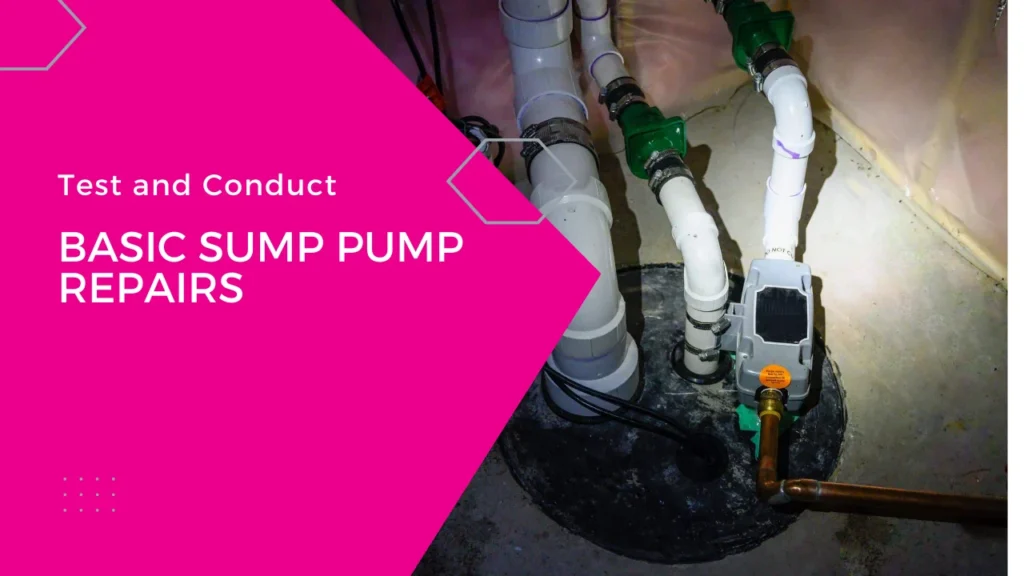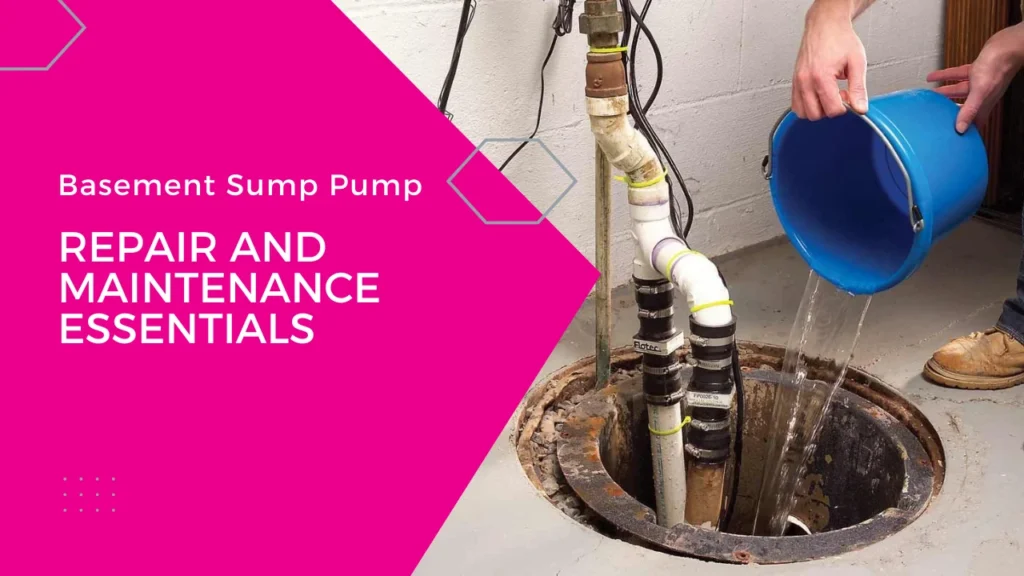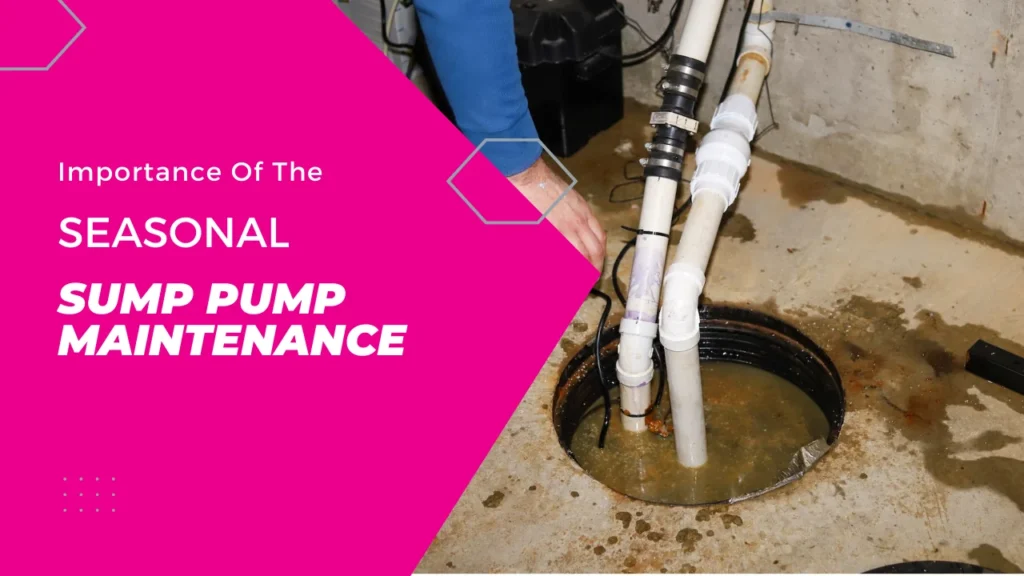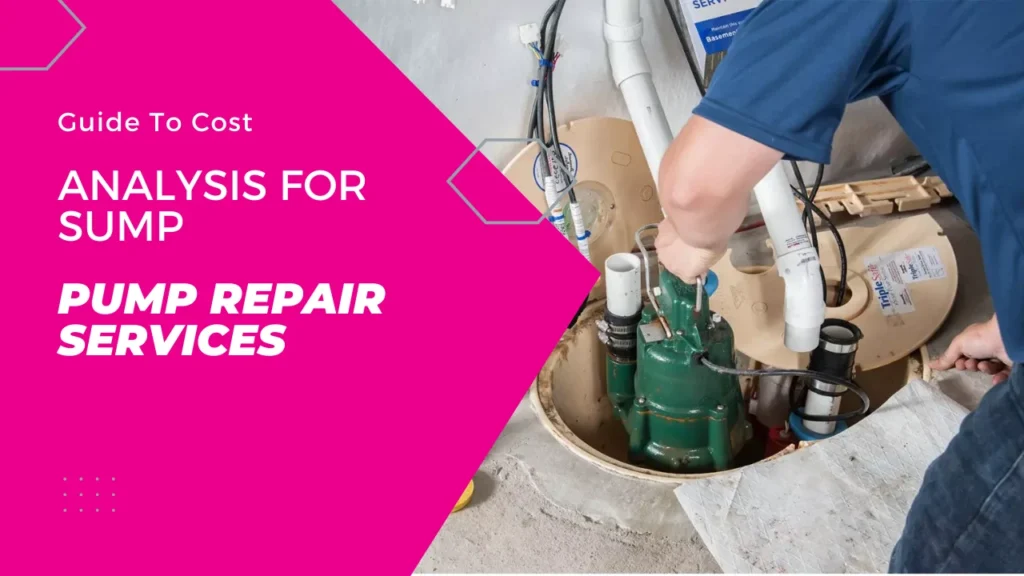Your sump pump is your home’s first line of defense against basement flooding and water damage so keeping it in optimal condition is important. Understanding how to maintain it is essential whether you’re facing an emergency sump pump situation.
Sump pump repair works tirelessly behind the scenes, reliably pumping excess water away from your home’s foundation and keeping it dry. However, like any mechanical system they require regular attention and care to perform effectively when needed. By investing your time in their maintenance ensures their continued reliability and peace of mind.
What are the steps to test sump pump repair?
Maintaining and testing your sump pump repair is crucial to ensure it operates effectively and protects your home from water damage. Here are the steps you can follow to maintain and test your sump pump:
Regular Inspection: Start by inspecting your sump pump regularly especially before the rainy season or periods of heavy rainfall. This proactive approach allows you to spot any potential issues early on.
Clean the Pump: Remove any debris, dirt, or sediment from the pump and the sump pit. This prevents clogs and blockages ensuring that the pump can operate efficiently when needed. Use a brush or vacuum to clear away any buildup.
Test the Float Switch: Pour water into the sump pit to test the float switch. This switch activates the pump when water levels rise. Watch to ensure that the float rises with the water level and triggers the pump to turn on. If the pump does not activate check for any obstructions or issues with the float switch mechanism.
Check Power Source: Inspect the sump pump’s power source which is typically an electrical outlet. Ensure the pump is securely plugged in and the outlet functions correctly. If the pump is not receiving power check the circuit breaker or fuse box to see if a tripped breaker or blown fuse is the cause.
Inspect Backup Systems: If your sump pump has a backup system such as a battery powered option it must be tested regularly. This ensures the backup system will kick in during power outages or emergencies. Test the backup system according to the manufacturer’s instructions and replace the battery as needed.
Verify the Check Valve: The check valve prevents water from flowing back into the sump pit once it has been pumped out. Visually inspect it for any signs of damage or wear to ensure that it is installed correctly and functioning properly.
Consider Sump Pit Cover: Installing a sump pit cover can help prevent debris from entering the pit and interfering with the pump’s operation. This helps reduce odors and moisture in the basement. Also for basement sump pump repair it is important to know specific essential maintenance guidelines.
Professional Inspection: Schedule a professional inspection of your sump pump system at least once a year. A qualified technician can identify potential issues and perform necessary repairs or maintenance to keep your sump pump in optimal condition.
How to Perform Basic Sump Pump Repairs?
Performing basic sump pump repair can help ensure your pump functions effectively and protects your home from water damage. Here’s a simple guide on how to conduct these repairs:
Identify the Issue: Start by identifying the problem with your sump pump. Common issues include unusual noises failure to turn on or water not being pumped out properly.
Shut Off Power: Before beginning any repairs turn off the sump pump’s power to prevent electrical accidents. Locate the power source, typically an electrical outlet or circuit breaker and switch it off.
Inspect the Pump: Once the power is off visually inspect the sump pump for any obvious signs of damage or wear. Look for cracks in the pump housing, loose connections or debris clogging the pump intake.
Replace Parts if Necessary: If you identify any damaged or worn out parts during your inspection such as the float switch, check valve or impeller replace them with new ones. Ensure you use compatible replacement parts recommended by the manufacturer.
Monitor for Leaks: Finally, monitor the sump pump for any signs of leaks or unusual noises while operating. Address any leaks promptly to prevent further damage to the pump or your property.
Expert Service!
At Priscilla’s Plumbing we understand the importance of a properly functioning sump pump system. Our expert team is dedicated to providing top notch basement sump pump repair services to ensure your home remains dry and protected.
Don’t wait until it’s too late to address sump pump issues. Whether you need routine maintenance, emergency repairs or a professional inspection our experienced technicians are here to help. Contact Priscilla’s Plumbing today to schedule your sump pump maintenance and keep your home safe and dry for years.
FAQs
How regularly should I test my sump pump?
It’s helpful to check your sump pump every few months, mainly before heavy rainfall or the wet season to ensure it functions optimally.
What must I do if my sump pump fails at some stage in heavy rainfall?
If your sump pump fails during heavy rainfall check the strength and flow transfer first. Utilize backup strategies like transportable pumps or buckets and contact a plumber for professional assistance.
Can I perform sump pump upkeep or lease a expert?
While primary renovation is possible for homeowners it’s advocated to enlist the knowledge of an expert plumber for sump pump upkeep to ensure proper diagnoses and problem resolution.




